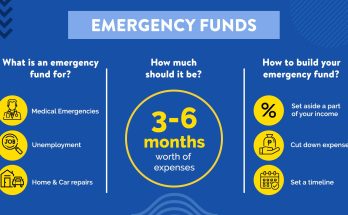Building an investment portfolio for retirement is one of the most critical financial endeavors an individual will undertake. It’s not merely about accumulating a large sum of money; rather, it’s about strategically allocating capital to ensure that those funds can comfortably support your lifestyle for decades after your working years conclude. This process demands a thoughtful approach, balancing growth potential with risk management, and adapting as your life circumstances and the market evolve.
The journey of building a retirement portfolio typically begins with a clear understanding of your personal financial landscape and, crucially, your risk tolerance. Your risk tolerance isn’t just about how much volatility you can stomach emotionally; it also encompasses your risk *capacity*, which is your financial ability to absorb losses without derailing your retirement plans. A young professional with decades until retirement, for instance, generally has a higher risk capacity and can afford to invest more aggressively in growth-oriented assets like stocks. These assets, while more volatile in the short term, have historically offered the highest returns over long periods, allowing the power of compounding to work its magic. Conversely, someone nearing retirement will likely have a lower risk capacity, necessitating a shift towards more conservative investments that prioritize capital preservation and income generation.
Once your risk profile is established, the cornerstone of any robust retirement portfolio is **asset allocation**. This refers to how your investment capital is divided among different asset classes, primarily stocks, bonds, and cash equivalents. Stocks, or equities, represent ownership in companies and offer the potential for substantial long-term growth. Bonds, on the other hand, are essentially loans to governments or corporations, providing more stable returns through interest payments and generally exhibiting lower volatility than stocks. Cash and cash equivalents offer liquidity and minimal risk but typically yield very low returns, making them suitable for short-term needs or as a defensive position during highly uncertain market conditions.
The optimal asset allocation is not static; it dynamically changes over your lifetime. For younger investors, a common strategy is a higher allocation to stocks, perhaps 80% or 90%, with the remainder in bonds. As retirement approaches, this allocation gradually shifts to a more conservative stance, perhaps moving towards a 60% stock, 40% bond mix, or even higher bond allocations in the immediate years before and during retirement. This gradual de-risking helps protect the accumulated nest egg from significant market downturns just as you are about to rely on it. However, it’s important to remember that even in retirement, a complete divestment from stocks is often ill-advised, as some growth is still necessary to combat inflation and ensure your money lasts throughout a potentially long retirement.
**Diversification** is another non-negotiable principle in retirement portfolio construction. It means not putting all your eggs in one basket. Within the stock portion of your portfolio, diversification involves investing across different industries, company sizes (large-cap, mid-cap, small-cap), and geographical regions (domestic and international). Similarly, in the bond portion, diversifying across different types of bonds (government, corporate, municipal) and maturities (short-term, intermediate-term, long-term) helps mitigate risk. The goal of diversification is to ensure that if one particular investment or sector performs poorly, its negative impact on your overall portfolio is cushioned by the performance of others. Mutual funds and Exchange-Traded Funds (ETFs) are excellent tools for achieving broad diversification efficiently, as they allow you to invest in a basket of many different securities with a single purchase.
Beyond stocks and bonds, some investors consider alternative investments like real estate, commodities, or even certain structured products for further diversification, though these often come with their own complexities and liquidity considerations. For most individuals, a well-diversified mix of low-cost stock and bond index funds or ETFs within tax-advantaged retirement accounts like 401(k)s and IRAs forms the backbone of an effective retirement portfolio.
Speaking of tax-advantaged accounts, integrating them into your portfolio strategy is paramount for long-term growth. Contributions to traditional 401(k)s and IRAs are often tax-deductible, reducing your current taxable income, while earnings grow tax-deferred until retirement. Roth 401(k)s and Roth IRAs, on the other hand, are funded with after-tax dollars, but qualified withdrawals in retirement are entirely tax-free, offering a significant advantage for those who expect to be in a higher tax bracket in retirement. A balanced approach often involves utilizing both pre-tax and Roth accounts to provide flexibility in retirement regarding future tax liabilities.
Finally, a crucial, often overlooked, step in portfolio management is **rebalancing**. Over time, due to market fluctuations, your initial asset allocation will inevitably drift. For example, if stocks have a strong year, their percentage of your portfolio might grow beyond your target allocation, increasing your overall risk. Rebalancing involves periodically adjusting your portfolio back to your desired asset allocation by selling some of the investments that have grown disproportionately and buying more of those that have lagged. This can be done annually or when an asset class deviates by a certain percentage from its target. Rebalancing helps maintain your desired risk level and can even be a disciplined way to “buy low and sell high” by trimming overperforming assets and adding to underperforming ones.
Building an investment portfolio for retirement is a marathon, not a sprint. It requires discipline, patience, and a willingness to adapt. By understanding your risk profile, strategically allocating your assets, diversifying broadly, utilizing tax-advantaged accounts, and regularly rebalancing, you can construct a resilient portfolio that is well-positioned to carry you comfortably through your golden years, providing the financial security and peace of mind you’ve worked so hard to achieve. Seeking advice from a qualified financial advisor can also provide invaluable personalized guidance throughout this important journey.




